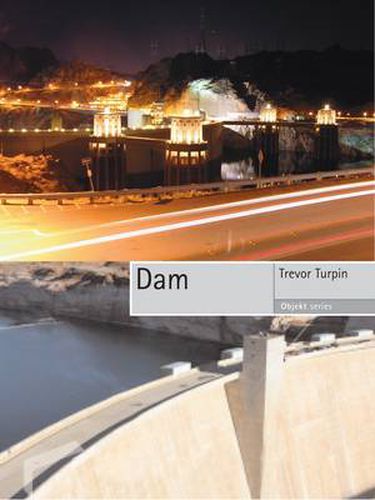Readings Newsletter
Become a Readings Member to make your shopping experience even easier.
Sign in or sign up for free!
You’re not far away from qualifying for FREE standard shipping within Australia
You’ve qualified for FREE standard shipping within Australia
The cart is loading…






As well as much-needed electricity, dams generate extremes of emotion. Traditionally, dams have facilitated hydraulic civilisations such as those in the Nile Valley, China and Mesopotamia, and, in the twentieth century, Las Vegas and Los Angeles. Yet with the proliferation of dams - there are now more than 40,000 large dams worldwide - opposition and support can be measured in equal proportion. Their outstanding design and construction, often in inhospitable conditions, is representative of the skills of their engineers, yet others do not see such beauty in the ‘taming’ of rivers. In 1998, the continuing controversy lead to the forming of the World Commission on Dams to seek a meeting of minds. Dam , a new addition to Reaktion’s Objekt series, traces the development of dams from the industrial revolution to the present day through a number of themes - both successes and failures - including the extension of the design teams forming an alliance between engineering, architecture, landscape architecture and ecology. A profusely illustrated exploration of a previously neglected subject, the book is neither a polemic against dams nor a defence of their proliferation. It offers a fresh and much-needed account of their design, construction, and function, which will appeal to dam engineers, environmentalists, historians, and students, as well as those who previously only recognised The Dambusters march.
$9.00 standard shipping within Australia
FREE standard shipping within Australia for orders over $100.00
Express & International shipping calculated at checkout
As well as much-needed electricity, dams generate extremes of emotion. Traditionally, dams have facilitated hydraulic civilisations such as those in the Nile Valley, China and Mesopotamia, and, in the twentieth century, Las Vegas and Los Angeles. Yet with the proliferation of dams - there are now more than 40,000 large dams worldwide - opposition and support can be measured in equal proportion. Their outstanding design and construction, often in inhospitable conditions, is representative of the skills of their engineers, yet others do not see such beauty in the ‘taming’ of rivers. In 1998, the continuing controversy lead to the forming of the World Commission on Dams to seek a meeting of minds. Dam , a new addition to Reaktion’s Objekt series, traces the development of dams from the industrial revolution to the present day through a number of themes - both successes and failures - including the extension of the design teams forming an alliance between engineering, architecture, landscape architecture and ecology. A profusely illustrated exploration of a previously neglected subject, the book is neither a polemic against dams nor a defence of their proliferation. It offers a fresh and much-needed account of their design, construction, and function, which will appeal to dam engineers, environmentalists, historians, and students, as well as those who previously only recognised The Dambusters march.